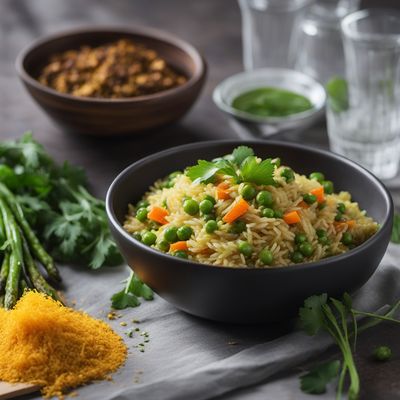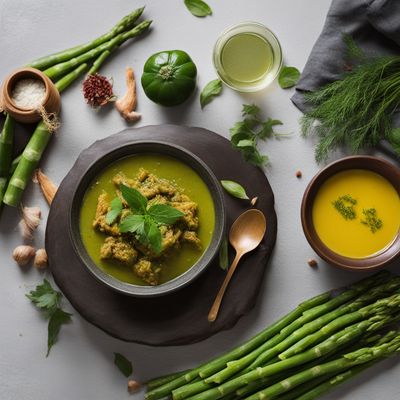
Ingredient
Asparagus
Spring's Delight
Asparagus is a versatile vegetable that is highly regarded for its delicate flavor and tender texture. With its vibrant green color and unique shape, it adds a touch of elegance to any dish and is a beloved ingredient in various cuisines around the world.
Origins and history
Asparagus has a long history dating back to ancient times, with records of its cultivation and consumption in ancient Egypt, Greece, and Rome. It was highly prized for its medicinal properties and was considered a luxury ingredient. Today, it is widely cultivated and enjoyed in many countries.
Nutritional information
Asparagus is a nutrient-dense vegetable, low in calories and fat while being rich in vitamins A, C, E, and K. It is also a good source of dietary fiber and contains various minerals such as potassium and folate. Its high antioxidant content contributes to its health benefits.
How to select
When selecting asparagus, look for firm stalks with tight tips and a vibrant green color. Avoid any signs of wilting, discoloration, or limpness. The stalks should be straight and not excessively woody. Additionally, thinner asparagus spears tend to be more tender and flavorful than thicker ones.
Storage recommendations
To maintain the freshness and quality of asparagus, store it in the refrigerator. Trim the ends and place the stalks upright in a container with a little water, covering them loosely with a plastic bag. This helps to retain moisture and prevent wilting. Consume asparagus within a few days for the best flavor and texture.
How to produce
Asparagus can be grown in home gardens or small-scale farms with proper care and attention. It requires well-drained soil, ample sunlight, and regular watering. Planting asparagus crowns or seeds in early spring or fall can yield a bountiful harvest in subsequent years.
Preparation tips
Asparagus can be prepared in various ways, including steaming, roasting, grilling, or sautéing. It can be enjoyed as a standalone side dish, added to salads, pasta, or risotto, or incorporated into stir-fries and omelets. Blanched asparagus can be used in cold dishes like salads or served with dips as an appetizer.
Culinary uses
Asparagus is a versatile ingredient used in a wide range of culinary applications. It is commonly used in salads, soups, quiches, and pasta dishes. It pairs well with ingredients like lemon, garlic, butter, and Parmesan cheese. Asparagus is also a popular vegetable for grilling or roasting, bringing out its natural sweetness and adding a smoky flavor.
Availability
Asparagus is widely available in many countries, including the United States, Europe, and Asia. It is commonly found in supermarkets, farmers markets, and specialty grocery stores.
More ingredients from this category
Recipes using Asparagus » Browse all

Anglo-Indian Spring Vegetable Pilaf
Spiced Pilaf with Fresh Spring Vegetables: A Fusion of Anglo-Indian Flavors

Asparagus Fritaja
Spring Delight: Asparagus Fritaja - A Croatian Culinary Gem

Asparagus with Morel Mushrooms
Spring Delight: Asparagus and Morel Mushroom Medley

Ovi e Sparasi Newari Style
Savory Egg and Asparagus Delight - A Fusion of Greek and Newari Flavors

Scafata with Spring Vegetables
Spring Delight: A Vibrant Scafata Recipe Bursting with Fresh Italian Flavors

California-style Grilled Lepre alla Teramana
Grilled Herb-Marinated Rabbit California Style

Saxon-style Asparagus Frittata
Saxon Delight: Asparagus Frittata with a Twist

Pennsylvania Dutch-style Asparagus
Amish-Inspired Asparagus Delight

Pasta Primavera with Fresh Vegetables
Garden Delight Pasta: A Burst of Freshness in Every Bite

Creamy Chicken and Asparagus Stir-Fry
Silky Chicken and Asparagus Delight

Creamy Chicken and Asparagus Casserole
Savory Delight: Danish-Inspired Creamy Chicken and Asparagus Casserole

Apulian-style Frittata di Vitalba
Savory Apulian Delight: Frittata di Vitalba with a Twist